Related Research Articles

The Percival Prentice was a basic trainer of the Royal Air Force in the early postwar period. It is a low-wing monoplane with a fixed tailwheel undercarriage. Front seating was in a side-by-side configuration with a rear seat provided.

The Foster Wikner Wicko was a 1930s British two-seat cabin monoplane built by the Foster Wikner Aircraft Company Limited at Southampton Airport, Hampshire.

The Auster J/2 Arrow is a 1940s British single-engined two-seat high-wing touring monoplane built by Auster Aircraft Limited at Rearsby, Leicestershire, England.

The Auster J/5 Autocar was a late 1940s British single-engined four-seat high-wing touring monoplane built by Auster Aircraft Limited at Rearsby, Leicestershire.

The Auster J/5 Aiglet Trainer was a 1950s British single-engined four-seat high-wing training and touring monoplane built by Auster Aircraft Limited at Rearsby, Leicestershire.

The Auster J/5 Alpine was a 1950s British single-engined four-seat high-wing training and touring monoplane built by Auster Aircraft Limited at Rearsby, Leicestershire.
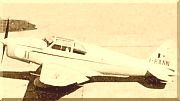
The Ambrosini S.1001 Grifo ("Griffin") was an Italian light airplane that appeared shortly after the end of World War II. The first plane built by SAI Ambrosini postwar, the prototype flew in 1947 and was derived from the pre-war SAI.2S. It was a four-seat monoplane with spatted fixed undercarriage. A small series was produced for the Italian aeroclubs with an Alfa Romeo 110-ter engine of 97 kW (130 hp). Three examples were even bought by the Italian Aeronautica Militare (AMI), which used them between 1948 and 1950.

The Chrislea Super Ace is a 1940s British four-seat light aircraft built by Chrislea Aircraft Limited.
The CAP-1 Planalto was a military trainer aircraft built in Brazil during World War II. It was a low-wing cantilever monoplane with fixed tailwheel undercarriage that accommodated the pilot and instructor in tandem open cockpits. The project had been initiated by Instituto de Pesquisas Tecnológicas (IPT) under the designation IPT-4 and although the design work had been contracted to CAP, IPT insisted on a wing profile of its own choosing that led to serious stability problems in the final product.

The Caudron C.280 Phalène ("Moth") was a civil utility aircraft built in France during the 1930s. It was a high-wing braced monoplane of conventional configuration with fixed tailskid undercarriage. The pilot and two-three passengers were accommodated within an enclosed cabin. The structure was wooden throughout, with the forward fuselage skinned with plywood, and the rest of the aircraft fabric-covered.
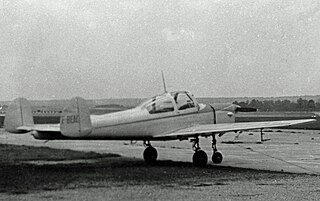
The Max Holste MH.52 was a 1940s French-built two-seat touring or training monoplane designed and constructed by Avions Max Holste.

The Miles M.65 Gemini was a British twin-engined four-seat touring aircraft designed and built by Miles Aircraft at Woodley Aerodrome. It was the last Miles aircraft to be produced in quantity.

The SAIMAN 202 was a 1930s Italian two-seat cabin monoplane designed and built by the Società Industrie Meccaniche Aeronautiche Navali (SAIMAN).
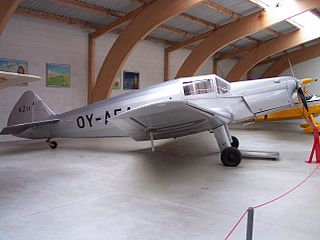
The SAI KZ II was a sport aircraft built in Denmark in 1937, produced in three major versions before and after the Second World War. In its original form, designated the Kupé it was a low-wing cantilever monoplane of conventional design with fixed tailwheel undercarriage and two seats side by side under an enclosed canopy. The fuselage structure was of steel tube, skinned in plywood and fabric, and the wings were wooden with plywood covering and could be folded back along the fuselage for transport and storage.

The SAI KZ IV was a light twin-engined aircraft first built in Denmark in 1944 for use as an air ambulance.

The SAI KZ VIII was an aerobatic sport aircraft first built in Denmark in 1949. It was a low-wing cantilever monoplane of conventional configuration with fixed tailwheel undercarriage and a single seat. The KZ VIII was custom-built by SAI for the Danish aerobatic display team Sylvest Jensen Luftcirkus, in which Peter Steen piloted the aircraft in some 50 performances in summer 1950. At the same time, a full set of parts for a second aircraft was produced, but this was not assembled until 1959.
The THK-2 was a single-seat, single-engine aerobatic trainer aircraft developed in Turkey in 1944 intended as an advanced trainer. It was a conventional, low-wing cantilever monoplane with an elliptical planform and of wooden construction. The cockpit was enclosed and the main units of the tailwheel undercarriage retracted backwards into the wing.
The Sparmann S-1 was a 1930s Swedish military training monoplane, designed by Edmund Sparmann, built in small numbers for the Swedish Air Force. The S-1 was a single-seat low-wing braced-monoplane with a fixed trail-skid landing gear. It was powered by a single 130 hp (97 kW) de Havilland Gipsy Major engine.
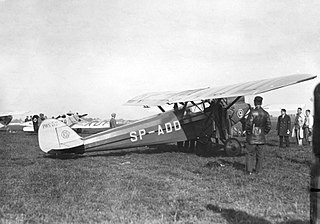
The PWS-52 was a Polish sports aircraft of 1930, a single-engine high-wing monoplane, constructed by the Podlaska Wytwórnia Samolotów (PWS), that remained a prototype.
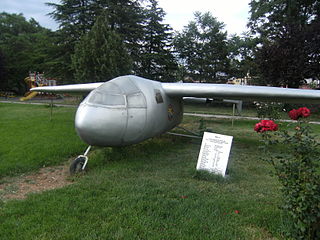
The THK 11 was a 1940s prototype Turkish four-seat monoplane, designed and built by Türk Hava Kurumu.
References
Citations
- ↑ "Reaching for the Sky: A Parry Sound company flies high producing bush planes". ic.gc.ca. Government of Canada, Innovation, Science and Economic Development Canada, National Capital Region, Office of the Deputy Minister, Regional Operations, FedNor (Federal Economic Development Initiative in Northern Ontario). Archived from the original on 28 December 2016. Retrieved 28 December 2016.
- ↑ Bridgman 1951, p. 105c.
Bibliography
- Bridgman, Leonard. Jane's All The World's Aircraft 1951–52. London: Sampson Low, Marston & Company, Ltd, 1951.
- The Illustrated Encyclopedia of Aircraft (Part Work 1982-1985). London: Orbis Publishing.
| This article on an aircraft of the 1940s is a stub. You can help Wikipedia by expanding it. |